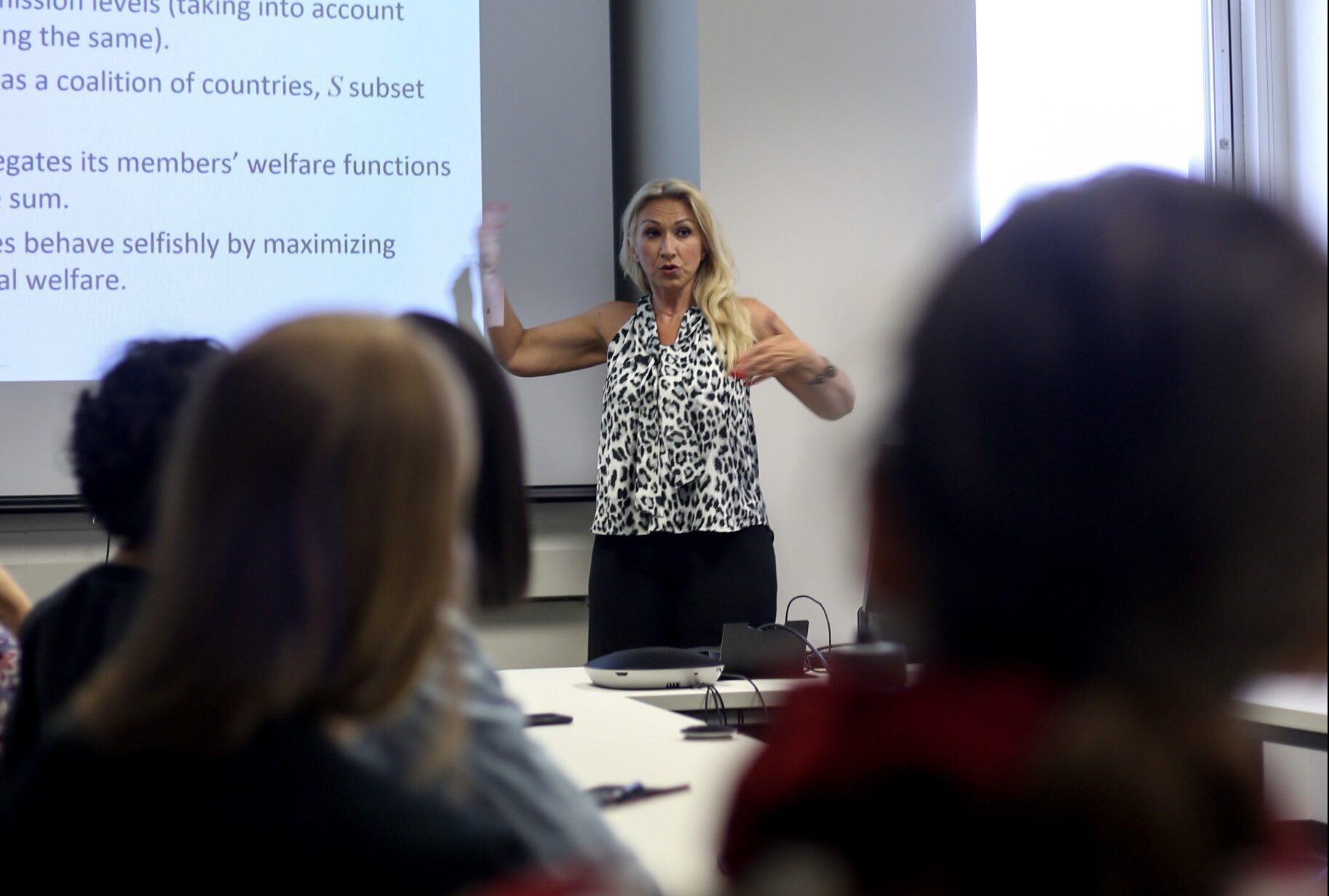“I have a daughter,” said economics professor and researcher Effrosyni Diamantoudi. “I want her to live in a happy world, like I did—in a world that’s not stressed with hurricanes and storms and all the consequences that come with climate change.”
“I see the world is not the same as it was 30 years ago,” Diamantoudi continued. “It’s not just for the sake of academic curiosity. My research has an important implication on the world I live in.”
Diamantoudi and her team have been researching international environmental agreements, through an environmental economist lense, for more than a decade.
She explained there are currently 180 environmental agreements that have been signed worldwide, which speaks to the necessity of an alternative method.
“If it was a no-brainer, then we would be drafting one agreement and then we’d all go home and it’ll be the end of it,” said Diamantoudi. But as it stands, these agreements are usually written and cancelled and rewritten and more defined and drafted.
We have the Paris Agreement, she said, and the Kyoto Protocol before that, and the Rio de Janeiro Earth Summit even before that.
After much research, Diamantoudi and her team suggest to embed the international environmental agreement within another overarching agreement, like trade, and involve as many countries as possible.
It is favorable for country leaders to be part of agreements. “When you’re outside of the agreement, then you have to pay taxes for everything you sell to those markets, you don’t benefit from everything they’re exporting. You lose a lot if you’re outside of a trading block, said Diamantoudi. “What we’re suggesting is a situation where the environmental agreement and the trading block becomes one body, and they negotiate over the two together.”
The concept is simple: if you don’t meet the environmental standards of the agreement, then as a country, you will have to pay a higher tariff.
“That’s a way of balancing the incentives,” said Diamantoudi.
Diamantoudi said their research shows that if some issues are tied into each other, it would reinforce the validity of the agreement.
Through this, more incentives would be created for federal governments to contribute, and for ways to ensure indirect punishment if the agreement isn’t met.
She explained there are several international agreements currently in the works, which usually involves much of the same countries, on a singular topic. A group of countries get together to talk about trade, and months later the same group talks about the environment, and then, another couple of months later, technology transfers, and so on.
Diamantoudi said there are three characteristics that explains the failure of most international environmental agreements.
The first is the lack of enforceability. There is no supranational authority overlooking individual countries to keep them accountable if they don’t abide by the agreements made in the international agreement. These agreements are voluntary, and have to be self-enforced, which therein lies a problem.
“Within a country, you can come up with laws,” said Diamantoudi. “‘Do not dump more than X pollutants in the river, and so on, and if you break the law then you get a fine, or you lose your business. Well, nobody can fine a country, and nobody can shut down a country.”
The second is freeriding. Diamantoudi explained that although it would be ideal for all of us to actually do our part, and keep our environment clean, each one of us individually deviates from the agreement because we count on the other to do their part.
If everybody else agrees to cooperate and to decrease their pollution, then each country individually has an incentive to free ride, to not meet their target, because they assume everybody else has. “They think to themselves ‘now climate change is under control, presumably, and therefore we can continue doing business as usual,’” said Diamantoudi.
The third is the heterogeneity of the problem. Not all countries are the same. So in that, not all countries have the same economies, are the same size, have the same industry, have the same natural resources, and not all countries suffer the same environmental consequences.
“It often happens that the countries that contribute to this greater bad, are not the ones that suffer the most,” said Diamantoudi. “So there’s this asymmetry in terms of contribution to the damage, and in consequences of the damage.”
“We have a dire problem in our hands, which explains why so many agreements tend to be drafted, and fail, and why we are where we are.”
Diamantoudi further explained if there are some smaller agreements which also has the environmental agreement embedded, it could be a good start.
“If we cant have all 180 countries sign, could we have a group of 90, and another group of 90, by all means, it’s better than nothing,” said Diamantoudi
She further explained that in situations like the environmental crisis, people have to take individual responsibility for their actions as well.
“You can’t teach people to care, but you can teach people to understand better, so information, education, into how this all works,” said Diamantoudi. “Yes, temperatures have increased, yes the water levels have risen, but [educate them on] the consequences of that. Make the calculation of that cost [to them individually], make that information more publicly available so that the masses can understand what’s going on.”
Feature photo by Alex Hutchins




